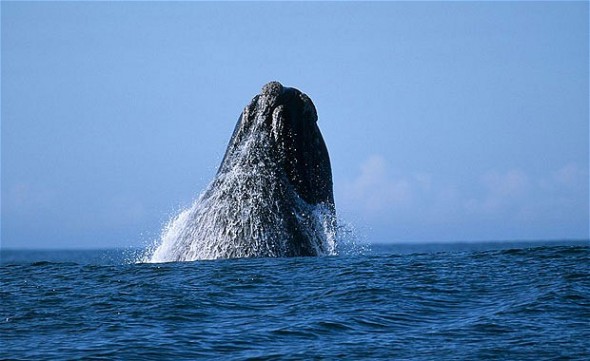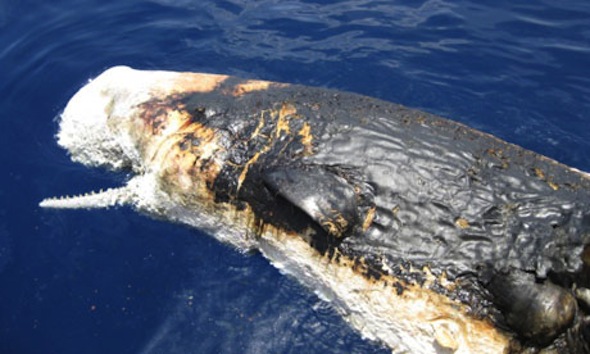A deaf whale is a dead whale

Whale off the coast of South Africa. Photo: http://www.telegraph.co.uk
That’s the title of a new report released today by conservation group, Oceana. The report, which focuses on U.S. oil exploration, shows, “that marine life and coastal economies along the Atlantic Ocean are threatened by seismic airguns used in testing for offshore oil and gas. The United States government itself estimates that the use of seismic airguns along the East Coast – an area twice the size of California, stretching from Delaware to Florida – will injure and possibly kill 138,500 whales and dolphins, and disturb necessary activities for millions more.”
Seismic testing doesn’t just happen in U.S. waters. Read Seismic tests enrage ecowarriors about environmentalists’ outrage when South African authorities admitted that “preliminary seismic tests had been ‘quietly’ conducted between the Port Elizabeth and Jeffreys Bay shorelines two weeks ago.”
More on South African drilling prospects (from an industry perspective) from Offshore magazine: Deepwater drilling on the way off South Africa
Greenpeace was already raising the alarm on the dangers of seismic testing ten years ago. But alas, the rate of offshore exploration has only grown since.
Did U.S. government downplay B.P. spill impact on wildlife?
Greenpeace has obtained a cache of NOAA (National Oceanic and Atmospheric Association) documents and photographs that suggest U.S. government officials kept information from the public in an attempt to downplay the environmental damage of BP’s 2010 Deepwater Horizon spill.
On June 15, 2010, NOAA crew aboard the research vessel, Pisces, spotted a dead sperm whale floating in the Gulf of Mexico. According to the Guardian, “NOAA did put out a press release about the dead whale. However, the release was edited and shortened in a way which appeared to minimise the effects of oil on whales.” The press coverage of the whale spotting was limited and it appears now that may have been the objective of U.S. officials.



